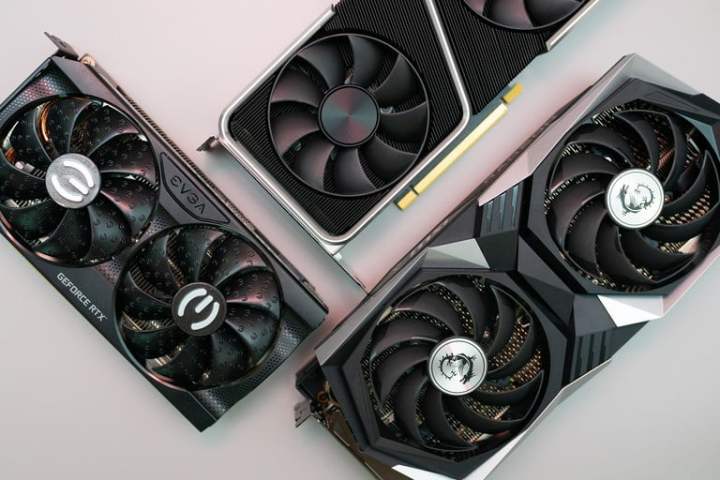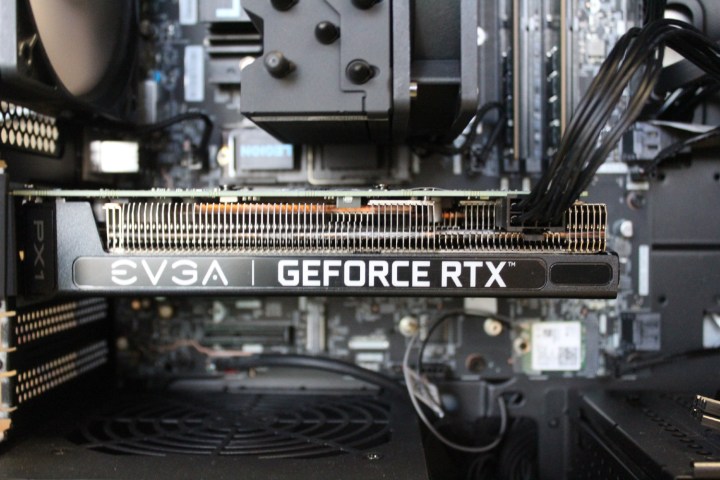It’s been over a year and a half since AMD introduced its RX 6000 series of GPUs, so it doesn’t come as a surprise that the company feels it’s time for a refresh. In the lower mid-range segment, AMD is introducing the RX 6650 XT to replace the 6600 XT, which is actually one of the newer RX 6000 GPUs to come out, having launched in August of last year. The RX 6650 XT is marketed toward gamers playing at 1080p just like the RX 6600 XT, and AMD is pitting it against Nvidia’s RTX 3060.
While we have the specifications and the prices of the 6650 XT, we don’t yet have our own benchmarks. Before then, we pitted the RX 6650 XT against the RTX 3060 to see how they stack up. The testing data below is AMD’s own, so don’t take it at face value.
Pricing and availability

In most cases, hardware refreshes either lower prices, increase performance, or do a mixture of both. The RX 6600 XT launched at $379 last August, and the RX 6650 XT launches at $399, so it certainly isn’t a simple price cut. While AMD feels that its competition on the Team Green is the RTX 3060, which launched in February 2021 at $329, a much closer competitor is the RTX 3060 Ti, which launched in December 2020 at $399.
However, the RTX 3060 Ti is generally not sold at $399, so AMD is focusing on the RTX 3060, which tends to sell for about $400-500 (at the time of writing). Keep in mind that AMD’s card will likely sell for above list price, too, so the RTX 3060 Ti comparison is fair.
Since 2020, MSRPs have been largely rendered meaningless by the GPU shortage, but the shortage seems to be nearly gone, as prices are dropping to near MSRP. At the moment, the 6650 XT has little to improve on in terms of availability. Although there is still a shortage, it’s not nearly as severe as it was last year.
Specs

The RX 6650 XT is a little more expensive than the RX 6600 XT, and it comes with a slight spec bump to match. The RTX 3060 is also included in this spec comparison, but a direct comparison to the AMD cards isn’t informative and can be misleading.
| RX 6600 XT | RX 6650 XT | RTX 3060 | |
| GPU | Navi 23 | Navi 23 | GA106 |
| Interface | PCIe 4.0 | PCIe 4.0 | PCIe 4.0 |
| CUDA cores/stream processors | 2,048 | 2,048 | 3,584 |
| Tensor cores | N/A | N/A | 112 |
| Ray tracing accelerators | 32 ray accelerators | 32 ray accelerators | 28 RT cores |
| Base clock | N/A | N/A | 1,320MHz |
| Boost clock | 2,539MHz | 2,635MHz | 1,777MHz |
| Memory | 8GB GDDR6 | 8GB GDDR6 | 12GB GDDR6 |
| Bandwidth | Up to 256GBps | Up to 432GBps | 360GBps |
| Memory bus | 128-bit | 128-bit | 192-bit |
| TDP | 160W | 180W | 170W |
The 6650 XT has a slightly higher boost clock of 2,635 MHz, a 4% increase over the 6600 XT’s boost clock of 2,539. The refreshed model is also equipped with 18Gbps GDDR6 memory, up from the 16Gbps memory on the 6600 XT and other 6000 series GPUs. Otherwise, the 6650 XT is identical to its predecessor: Same CUs, same amount of VRAM, and same amount of Infinity Cache.
Higher clock speed and memory bandwidth tends to translate to higher performance. However, these specs aren’t quite on the same level. Higher GPU clock speed usually translates to proportionally higher framerates, and since the clock speed is only up 4%, we would expect about that much more performance. By contrast, memory bandwidth can be a limit on performance if it’s too low, so while having high memory bandwidth is certainly a good thing, increasing bandwidth can only improve performance if there wasn’t enough in the first place.
Performance

Before we get into the data, we need to point out that it comes from AMD, as we have not yet conducted our own benchmarks. However, since this is a fairly simple refresh, we would expect the RX 6650 XT to lead the RX 6600 XT slightly, just based on the specs. And since we’ve already tested the RX 6600 XT against the RTX 3060, it’s pretty easy to judge if AMD’s benchmarks are realistic.
AMD provided us 1080p benchmarks from 16 games, showcasing the performance of the 6650 XT against the 3060 and the 6600 XT. These benchmarks were run on a system using a Ryzen 7 5800X3D (generally considered to be the best gaming CPU) and 16 GB of DDR4 memory at 3600MHz. In the table below, we compare AMD’s data to our own.
| AMD’s Benchmarks: RX 6650 XT vs. RTX 3060 | Our Benchmarks: RX 6600 XT vs. RTX 3060 | ||
| Red Dead Redemption 2 | +21% | +5% | |
| Fortnite | +7% | +4% | |
| Assassin’s Creed Valhalla | +37% | +30% | |
| Battlefield V | +27% | +13% |
Before we compare our data to AMD’s, we need to know the difference between the RX 6650 XT and the RX 6600 XT. According to AMD’s own testing, it is consistently faster than the RX 6600 XT. At best, though, it was only 6.5% faster, and in most benchmarks, the lead was around 1-2%. The two GPUs practically have the same performance, so we can tell that AMD’s own benchmarks are quite favorable to their GPU, which isn’t surprising.
Since the MSRP of the RX 6650 XT is 5% higher than that of the RX 6600 XT, the bang for buck of both GPUs is about the same. According to AMD’s own benchmarks, not much is going to change with the launch of the RX 6650 XT, which is a little unusual for a refresh.
Where does the RX 6650 XT fit in?

Since it’s nearly identical to the RX 6600 XT, the RX 6650 XT doesn’t really change the dynamic between AMD and Nvidia in the $300-400 segment. Perhaps it could be said that a refresh might improve graphics card supply and lower prices, but prices and availability have been improving for months, regardless of the RX 6000 refresh.
Users at r/BuildAPCSales, a subreddit that tracks good deals for PC parts and other related items, has spotted the RX 6600 XT being sold for less than MSRP, albeit including rebates. It’s hard to see how the RX 6650 XT will stand out in a market that is finally recovering from a severe shortage.




